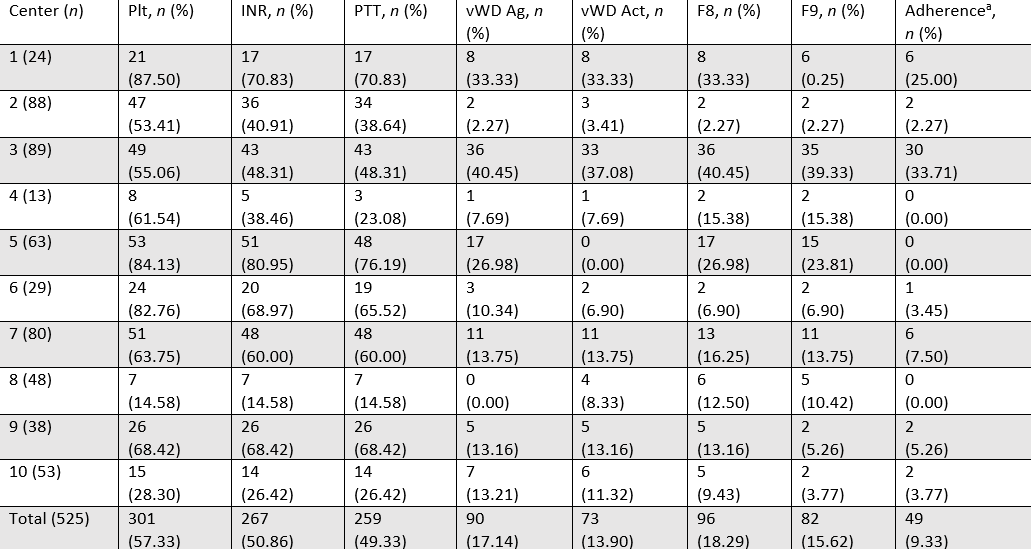Child Abuse & Neglect
Session: Child Abuse & Neglect 2
192 - Testing for Bleeding Disorders in Child Abuse: Adherence to AAP Recommendations and Results of Testing.
Saturday, May 4, 2024
3:30 PM - 6:00 PM ET
Poster Number: 192
Publication Number: 192.1590
Publication Number: 192.1590
- LH
Lyndsey Hultman, MD (she/her/hers)
Child Abuse Pediatrics Fellow
Children's Mercy Hospital
Kansas City, Missouri, United States
Presenting Author(s)
Background: The American Academy of Pediatrics (AAP) recommends evaluations for bleeding disorders in children who have bruising and/or intracranial hemorrhage (ICH) concerning for abuse. Adherence to these recommendations is not known nor are the frequencies of identification of bleeding disorders or laboratory findings suggestive of a bleeding disorder.
Objective: Using a multicenter research network (CAPNET), the objectives of this study were to characterize (1) the adherence to AAP recommendations for bleeding disorder testing in total and across CAPNET sites and (2) the frequency of identification of specific bleeding disorders and laboratory values concerning for bleeding disorders.
Design/Methods: We performed a descriptive study of bleeding disorder evaluations among children younger than 10 years of age who presented with bruising and/or ICH concerning for abuse from February 2021-May 2022 utilizing CAPNET. Cases were classified as (1) Bruising without ICH or (2) ICH with or without bruising. Based on AAP guidance, testing was not recommended in cases with concomitant suspicious injuries, inflicted injury history, patterned injury, and low clinical concern for abuse. The primary outcome was adherence to AAP recommendations for testing based on study group. We also calculated the frequency of identification of specific bleeding disorders. As CAPNET has a data entry window that may exclude final diagnosis of a bleeding disorder, we identified cases with abnormal bleeding disorder testing not specifically labeled as a bleeding disorder in CAPNET.
Results: A total of 2,698 children presented with Bruising and/or ICH concerning for abuse during the study period. The study group had a mean age of 26.2 months and was 59.6% male, 64.7% White, 19.2% African American, 17.0% Hispanic, and 69.8% publicly insured. 25.6% (692/2698) of subjects (525 with bruising and 167 with ICH) were recommended to have testing based on AAP criteria. Of these, 9.3% (49/525) cases of bruising and 33.5% (56/167) cases of ICH had all AAP recommended bleeding disorder testing completed. Among CAPNET centers, completion of AAP recommended testing ranged from 0-33.71% of bruising cases and 0-100% of ICH cases. A total of 0.93% (25/2698) cases had a specific bleeding disorder identified. Analyzing abnormal test results, 7.51% (52/692) of cases with testing recommended had abnormal results but were not diagnosed with bleeding disorders.
Conclusion(s): Testing for bleeding disorders based on AAP recommendations frequently did not occur and varied by CAPNET center. Although rare, bleeding disorders were present among cases with testing.


